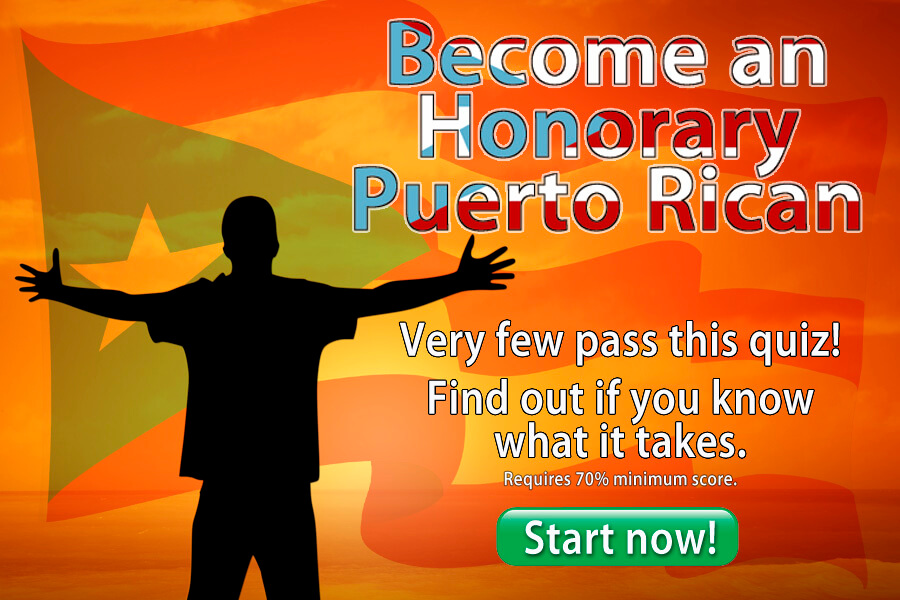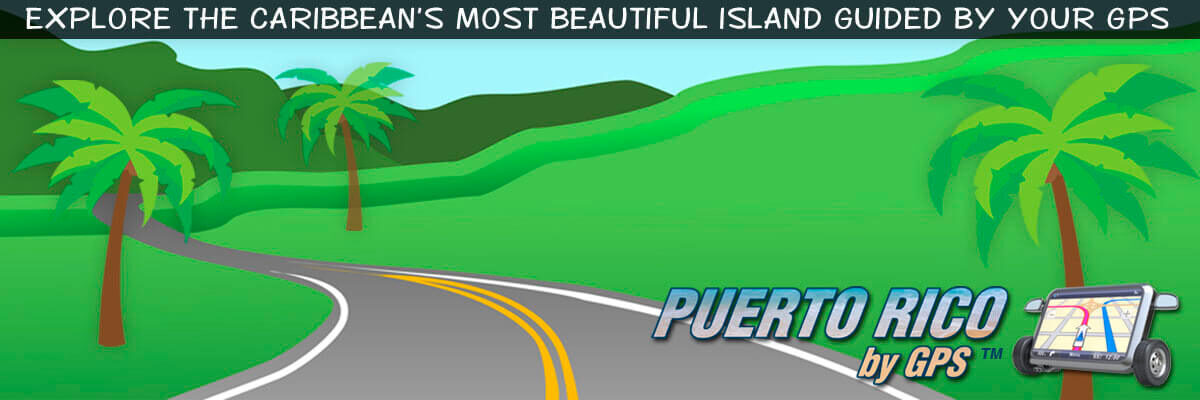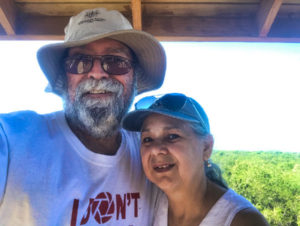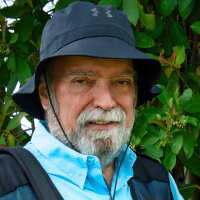Puerto Rico started 2020 on the wrong foot. The earthquake that hit the southwestern portion of the Island on January 7, 2020 destroyed many structures and peppered the region with refugee camps. Cabo Rojo wasn’t hit particularly hard by the earthquake, or the aftershocks that still occur to this day, but tourism in the area has certainly felt the brunt of these natural phenomena.
Operators in the area are feeling the effects in the form of reduced visitors from here and abroad. Locals have curtailed their visits because of the extensive media coverage emphasizing danger and destruction. Snowbirds from the mainland don’t know the difference between Fajardo, Rincón, Maunabo or Cabo Rojo. They just know that it’s trembling in Puerto Rico so they’re not coming here.
Enticing locals should be a lot easier than attracting continentals. For us it’s a matter of hopping on our cars and driving for a couple of hours. And there’s certainly a spirit of cooperation and camaraderie among islanders who would like to see the affected areas come back to life. But then there are situations that leave you scratching your head.
Yesterday I went for a drive with Zoraida. We’ve been going through a rough patch lately and I felt like a day out in nature would lift our spirits. So we decided to visit the town of Cabo Rojo. The idea was to photograph birds at the various nature reserves and then post an entry on Puerto Rico By GPS, thus incentivizing others to visit the area.
We got up at 3:00am and by 4:30am we were on the road. Our objective was to spend the day “birding”, make some pretty pictures and be back by 7:00pm. Well, by 1:00pm it was all over. At 4:00pm we were back in San Juan, disappointed and “pictureless”. Let me tell you what happened.

Our first stop was “Laguna Cartagena”, located on the county line between the towns of Cabo Rojo and Lajas. We got there at 6:45am. The gate was closed. There was no schedule posted anywhere and no one to ask. The YouTube videos that I consulted talked about a drivable trail around the lagoon, the many birds you could photograph, and how large the place was; over 1,043 acres.
Our first reaction was to try to go around the place. Maybe there was another entrance. Since there was no one to ask we could only imagine. So we drove a little further down the road and found a dirt trail that seemed to follow the facility’s bob wire fencing. We started down the trail only to find that it got narrower and narrower, muddier and muddier and rougher by the minute. After a mile or so of trying to deal with the worsening terrain we managed to turn around.
By the time we got back to the park entrance it was 7:30am, our best light was gone, the gate was still closed and our car had mud up to its antenna. There was still no one to ask. Finally I stopped a cyclist that was riding by. He told me that the place had been closed to traffic for months and that the only way to explore it was on foot. Yeah, right… all 1,043 acres of it. Needless to say, we left frustrated and angry.
Our next stop was the Boquerón Wildlife Reserve. It was also closed to vehicular traffic. I could see through the fence that the entryway alone was a couple of miles long. Google Maps shows this reserve to be a much larger place than Laguna Cartage so walking it was out of the question.
It seems like Cabo Rojo is popular among cyclists because once again was able to ask a group of cyclists about the Boquerón Wildlife Reserve. They told us that the place had been closed for weeks but there was a way to go around back and reach the lagoon area where most of the migratory birds converged. Needless to say, we tried several dirt trails, drove by stolen vehicle carcasses and gave up frustrated once again. On the way out we drove by a couple of individuals on a pickup truck who didn’t seem too friendly. They were probably on their way to dismantle one of the stolen vehicles and wouldn’t take too kindly to us snooping around.
By 9:00am we were entering the Cabo Rojo National Wildlife Refuge. It’s a beautiful facility run by the U.S. Fish and Wildlife Service. By then the sun was up, most of the birds were gone and we had little hope of seeing anything worthwhile.
Many years ago I learned from my friend John Hargis that wildlife isn’t dumb. They protect themselves from the harsh sunlight the same way that we do. Birds come out early in the morning, find a bite to eat and retreat into the vegetation, where its shadier and cooler, until late afternoon. That means that if you’re going to have any hope of capturing great images of birds it will be early in the morning or late in the afternoon. Yet, there we were, all the way in Cabo Rojo, 100 miles from home, without a single “keeper” image, and not wanting to go home empty handed.
So, against our better judgement, we went down one of the trails hoping to find birds dumb enough to perch out in the blazing sun. The Cabo Rojo National Wildlife Refuge is nice, very nice. The trails are clean (no garbage), well marked and there’s plenty of trees where you can rest in the shade and catch your breath. Even so, you should bring plenty of water, maybe an energy bar or two, and wear adequate sunblock. And if you do bring those energy bars remember to take the wrappers with you.
By 12:00n we had completed the first trail, were back to main building and decided to take a break and have lunch under a huge Tamarindo tree.
At 1:00pm we had a decision to make. We could go down a second trail, knowing that our chances of spotting any birds were nil, or we could start our journey back to San Juan. We chose the later. By 4:00pm we were back to the hustle and bustle of the San Juan Metroplex having wasted an entire day, a tankful of gas and whatever we were charged for the EasyPass. We were angry and disappointed.
Listening to local radio you constantly hear how tourism on the Island has dwindled during what should’ve been our peak season. Operators constantly urge local residents to come to the southwest, to sponsor local businesses and to visit local attractions. But then, when you try, you run into situations like ours.
Of course, I recognize that maybe I’m not the type of tourist that they’re seeking. Most of the time I don’t stay at local hotels. Many times I don’t even eat at local places. My wife and I get up early, bring a couple of sandwiches and arrive at sunrise to cover local attractions. Then I write about them, post pictures, audio, video and GPS maps so that other “regular tourists” will be interested, find the places with ease and visit the areas. And I do it all for free, without sponsorship of any kind from private or governmental agencies. It’s a non-profit thankless operation.
So here’s my question. Why does it have to be so hard? Don’t the powers at be understand that every time someone visits Cabo Rojo (or any other town for that matter), and feels disappointed, he/she is going to tell the world about it? Don’t they understand that the best kind of promotion is word of mouth? And that it’s free!!! Of course, the opposite is also true.
Granted, most people aren’t as vocal as I am, or own a forum where they can vent their feelings at will. And most people won’t go to the trouble of writing a detailed sequence of events either. But they do go on Trip Advisor, on YELP and on so many other social media sites and write short passages to vent their frustrations.
Bringing tourism to Puerto Rico shouldn’t be so hard. After all it’s one of the most beautiful places in the world, with or without earthquakes. Beside, other places have earthquakes: Columbia, Mexico and California; to name a few. What they don’t have is erratic offerings and incompetent people in charge of vital sectors of their economy.
Puerto Rico is hurting. I get it. But we can’t sit around moping and hoping while neighboring competitors eat our lunch. They feel our pain, of course they do, but they’re also going to use it to their advantage.
Our disasters (both natural and manmade) are competitive advantages for other destinations and their going to milk them to the last drop unless we get up and pick up. We need to put our best foot forward. We need to show the world our best face. And what’s even more important is that we have everything we need. We just have to want to. We just have to do it!!! No excuses!!!
Writing a post like this one hurts. It hurts because I’d like the message to be: “come on over”, “everything’s great”. But it’s not. Besides, on Puerto Rico By GPS we’ve always told it like is from day one.
The earthquakes shattered buildings, streets, schools and all sorts of facilities. But most importantly they seem to have shattered our spirits. So we need yet another shake. We need to shake free of negative mindsets, free of pessimism and free of half-assed attitudes. We need to get back to being what we are best: positive, fun-loving, friendly and welcoming people.
I could go on, but what’s the use? No one cares anyway. In fact, I’d be surprised if anyone reads this at all. I’m just a lone guy with a camera, a computer and the Internet. Right?
By the way, I didn’t post any pictures because I didn’t make any. Anything else would have been misleading.
©2020,Orlando Mergal, MA
____________________
Bilingual Content Creator, Blogger, Podcaster,
Author, Photographer and New Media Expert
Tel. 787–750-0000, Mobile 787–306-1590
#caborojo #puertorico #tourism #seepuertorico #nature #birding #landscapephotography #puertoricobygps #puertoricophotography #orlandomergal



Saludos Orlando,
I am so sorry you had such a bad experience. The gate at Laguna Cartagena is always closed. You simply walk through the people-sizeD opening to the side of it and along the narrow roadway on the elevated berm and within a couple of hundred yards you will begin seeing wonderful water birds — coots, moorhens, purple gallinules, herons from great blue down to snowy egrets, rails, ducks from teal to whistling ducks, ibises, even red winged black birds, and in the vicinity, osprey, kestrels , troupials, Yellow shouldered blackbirds,
etc. Don’t go in shorts. Too many burrs and possibly a few mosquitos.
The Cabo Rojo Salinas have interesting shorebirds — royal terns are my favorite. The walks on the trails to the shore will bring you wonderful and diverse shore birds as well as local and migratory warblers,
As you pointed out, the walking trails in the wildlife preserve Is an orderly and pristine experience. All kinds of interesting birds — from warblers to smooth billed anis.
Even the wetlands behind Combate Beach are laden with black necked stilts and the like and the beach itself has many royal terns and brown boobies doing aerobatics. Even oystercatchers can be seen in winter.
My advice, stay one night at Combate Beach Resort and another at the Copamarina Hotel where you can go to Gilligan’s for a couple of beautiful hours of swimming and maybe get a guide to take you into the Dry Forest and maybe see a guabairo. at Gilligan’s, I saw a wonderful nursery of tiny spectacular fish — blue tang, clownfish, etc., among the roots of the mangroves including a 6” long baby moray eel.
We happened to have a wonderful photographer, Jack Eyler, with us who actually captured a number of the birds I just mentioned. Check out his web site or his Facebook page.
Thank you Jon for your excellent pointers.
The kind of information that you provided is precisely the kind of information that should be available both at the gate and online for Laguna Cartagena; given the fact that there isn’t an actual human being to point people in the right direction. The same goes for the Boquerón facilities.
In the case of the “Cabo Rojo Wildlife Refuge” there are real people who answer questions, hand out printed material and steer you in the right direction.
As for the wetlands behind “Combate Beach Resort”, I’ve been there several times. In fact, I captured several images of ”Pitirres”, “Ruiseñores” and a spectacular “Turpial” there.
Maybe I’m the problem. Maybe I expect too much from my fellow “puertorriqueños”. After traveling extensively throughout the U.S. National Park Service’s facilities, and visiting several dozen state parks as well, I’ve seen how these things are done right.
And then there’s the trolls. One creep in particular argued that I was some sort of a lazy bum that just didn’t want to walk. This is far from the truth. There’s a great deal of walking to be done at the U.S. National Parks. And believe me, I’ve done it. But when the only information available is the size of a place (over 1,000 acres) you expect some sort of drivable trail. Case in point, “Land Between The Lakes”, a beautiful facility on the Kentucky/Tennessee state line where you drive along a loop and are able to photograph hundreds of animals and birds. Of course, you can walk if you wish. But you can stay in your car and have the bison walk up to your window.
I certainly don’t expect to shoot our local birds from my car window, but it would be nice to move around, get out, walk for a while, shoot the birds and move on to the next spot.
I understand that this sort of arrangement takes money. It takes personnel, facilities and maintenance too. But then again, the places that I mention aren’t free. You pay a reasonable amount (usually between $20 and $30) and receive excellence in return. It’s like anything else in life: you get what you pay for.
In Puerto Rico people expect everything to be free so we have to put up with mediocrity at best. Once again, we get what we pay for.
Then you have pockets of excellence like the “Cabo Rojo Wildlife Refuge”, fort “San Felipe del Morro” and “Fort San Cristobal”. The CRWLR is free and still you have great facilities, trained personnel, well maintained trails, excellent signage and abundant printed and audiovisual material. There are even QR Codes that you can read with your smartphone and listen to the call of each and every bird.
The forts in San Juan aren’t free but the fee you pay is ridiculously low.
Why can’t Puerto Rico do something similar at Laguna Cartagena or at the Boquerón area? Are we dumber? Are we less capable? No.
We certainly don’t have deep pockets like uncle Sam, but in my mind what’s really missing is imagination and a desire to get things done. These places don’t need to be free. They just need to be excellent.
In my humble opinion we are thinking way too small. Every year Puerto Rico is a migratory stopover for thousands of snowbirds (both feathered and otherwise). There are tourists who visit the Island just for the birds. It’s like a scaled down version of “Bosque Del Apache” in southern New Mexico. Well guess what, New Mexicans have created an entire tourism industry around “Bosque Del Apache”. Why can’t we do the same? Why do we always have to think small? Once again, are we dumber, less capable?
I’ve never been active in the tourism industry. I’ve been a tourist but not a vendor of any kind. However, I spent 25 years of my life serving the pharmaceutical sector. So I do know about constant and never ending improvement. I know about always striving for the best. And that’s not what I see in our tourism field.
Of course, there are pockets of excellence like Tomás Ramírez’s “Combate Beach Resort”. Tomás was my customer in the pharmaceutical world and I’ve interviewed him twice for my podcast “Hablando De Tecnología”. But Tomás and his people don’t seem to be the norm. They are a wonderful exception.
Every year I observe how small operators in the Cabo Rojo area seem to focus their efforts on attracting locals; not snowbirds but locals. The problem with that is that we don’t bring new money into the Island’s economy. They’re just moving money around and that doesn’t add to our bottom line. Sure, it makes no difference for the guy selling snorkeling lessons at the beach, but it certainly affects the Island’s bottom line.
So in closing, I admit that maybe I’m the problem. Maybe I expect too much. Maybe I’m to blame for imagining our places to be way better than they actually are. Maybe I’m just a dreamer! Maybe excellence will never be an islandwide phenomenon. But believe me, there are way more people like me than you think; both locally and abroad. And you what they do? They just go somewhere else.